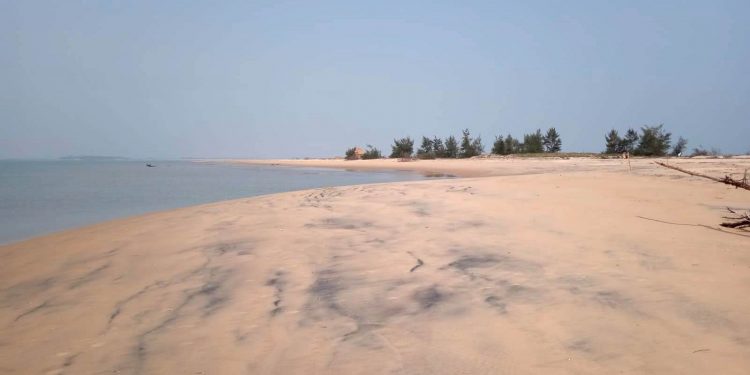Kendrapara: Depleting mangrove cover and constant erosion of the beach have posed a serious threat to the eco-system of Bhitarkanika National Park in Kendrapara district, a report said.
Bhitarkanika is visited by tourists from the state and beyond not only for its diverse eco-system featuring many mangrove species, saltwater crocodile, Indian python, king cobra, black ibis, darters and many other species of flora and fauna, but also for migratory birds, rare Olive Ridley turtles and other animals.
The saltwater crocodiles, dolphins, host of medicinal plants and mangrove forests are the main attraction for the tourists. However, with passage of time, the eco-system of Bhitarkanika has come under serious threat due to various reasons.
Scarcity of freshwater has affected the wetland, while global warming and climate change are leading to rapid erosion of the coastline. Moreover, this forest land has turned into a safe haven for the illegal Bangladeshi immigrants.
This has led to depletion of mangrove cover in the area and rampant poaching of wild animals and marine creatures. Coastal erosion has sharply increased due to destruction of mangrove forests by the Bangladeshi immigrants.
The mangrove forests are known as sea wall as they help prevent erosion of the beach due to rising tidal waves. These apart, toxic chemicals discharged from the prawn gheries and industrial wastes have pushed the environment of Bhitarkanika towards destruction.
This has sparked serious concern among the environmentalists, social activists and local residents. A researcher Dr PN Gourang, environmentalist Hemant Kumar Rout, social activists Bhuban Mohan Jena, Manoj Nayak and intellectual Matrudutt Mohanty said that the Bhitarkanika is a gift of nature for the mankind.
The wetland grown with the brackish water of Bay of Bengal and freshwater of Brahmani and Baitarani rivers is a tourists’ paradise. The Bhitarkanika is rich in biodiversity.
As many as 72 types of mangrove plants and 64 types of medicinal plants are found in this forest. It is home to 215 varieties of indigenous and migratory birds, salt water crocodiles and 16 types of albino crocodiles like Gori and Malli.
Earlier, the indigenous birds used to reside in the heronry of Bhitarkanika but have now shifted to Mathadia and Lakshmiprasadadia after their habitats were threatened.
The destruction in environment has deprived the birds of a safe habitat and a reduction in number of marine creatures like dolphins. On the other hand the sea level is rising due to global warming.
Moreover, discharge of toxic effluents from the prawn gheries and industries has impacted the nesting and breeding sites of Olive Ridley turtles while decline in flow of freshwater to the wetland might lead to its destruction someday, they warned.
When contacted, divisional forest officer Bikash Ranjan Dash said efforts are being made to check infiltration of Bangladeshis into the wetland, planting of mangrove saplings to spread the green cover and demolish illegal prawn gheries are being taken up at regular intervals.
The restrictions imposed from time to time, such as fishing ban, have helped check poaching of wild animals and marine creatures. However, a special survey should be undertaken to assess the reason behind constant erosion of the beach, he added.
PNN






































